The Australian magazine PIX had already covered the newfangled teenagers in 1946. Three years later they had another look and this time spent the article complaining about the creeping Americanism. Despite the WW2 US forces that had been stationed in Australia now gone the Australian teenagers, like most throughout the world, looked towards American for their inspiration.
PIX in December 1949:
The teenager in Australia today is finding it harder to grow up than any of the generations that preceded him. His wholesale acceptance of American ways of dressing, American ways of dancing, American foods and American cliches of speech and thought are making him misunderstood in his own country. His enthusiastic expression of American culture and tradition is bringing him into conflict with his elders and making his assimilation into the community difficult.
Sydney University’s anthropology head, Professor A. P. Elkin pointed out that Australian teenagers are attracted by an outside culture and way of life which is not integrated with the native or British way of life. By attempting to grown up as foreigners in their own country, teenagers are causing cultural friction between the generations, making themselves unhappy and inclined to revolt.
Later on said Professor Elkin, they will settle down. They will realise they must be plain Australians and Englishmen, although for the time they are hypnotised by ways that look exotic.
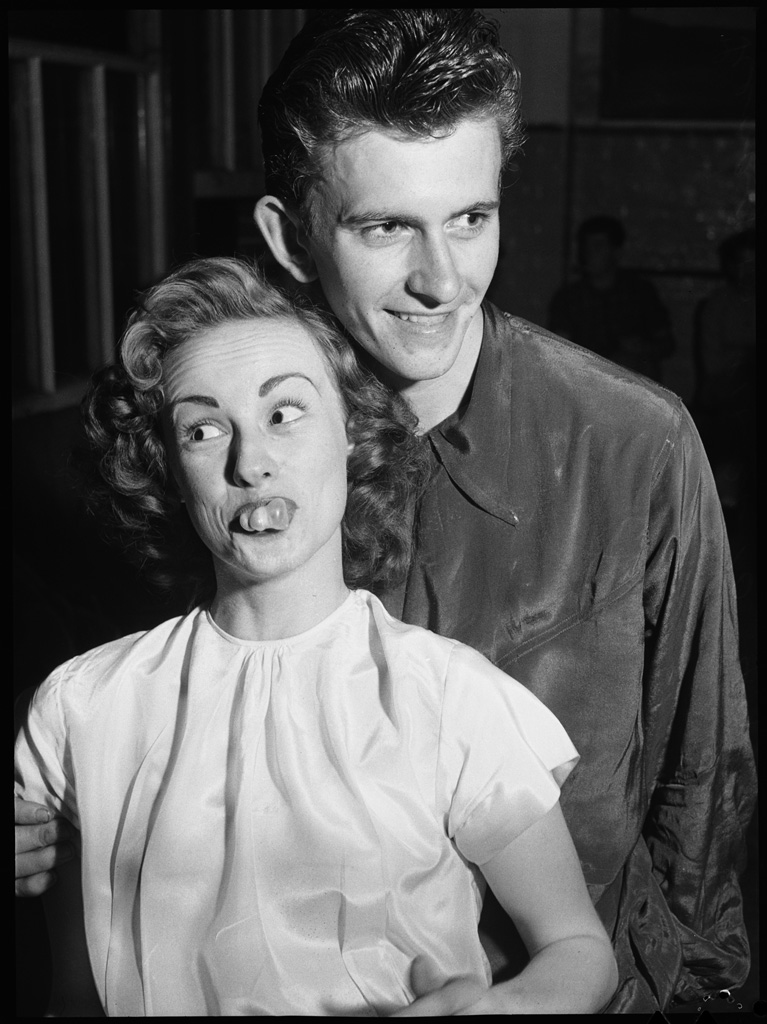
Original caption: NO NEED FOR ALARM: The lady is not biting her tongue off but merely demonstrating what can be done with the imported American craze bubble gum. Teenager Fay Cleary’s partner is Tex Vaughan of King’s Cross.
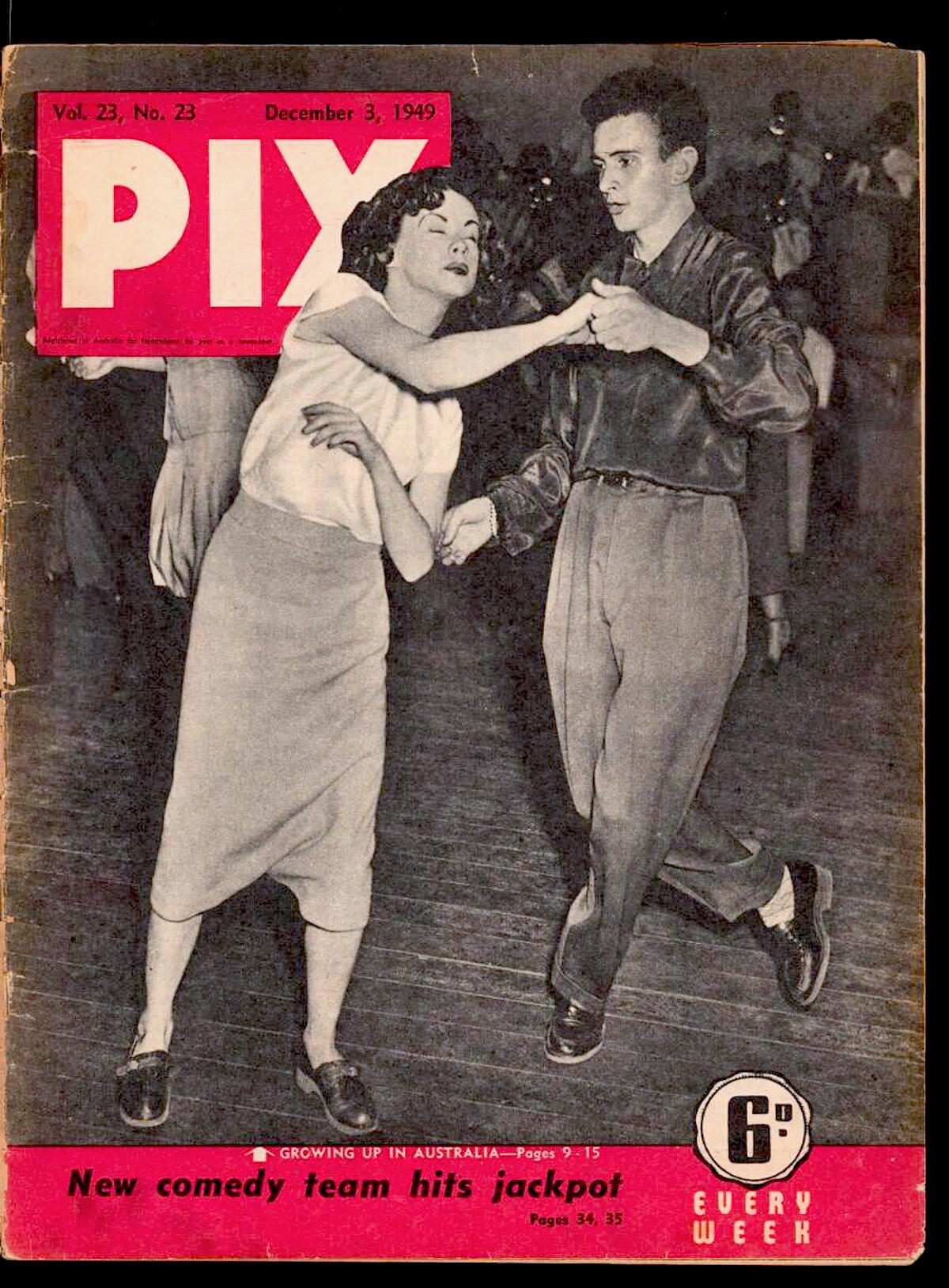
Pix Magazine, 3 December 1949
PIX magazine’s long moan continues:
The Americans, who “discovered” the teenager, have built up an imposing series of industries around him. Specialised magazines cater for the teenage miss, whole stores are devoted to teenage needs, huge fortunes have been amassed in meeting what are believed to be teenager requirements.
Teenagers have their own music and dance routines, even speak a different language form the average Australian over twenty-one. Films, magazines, advertisers and radio all cash in on the teenagers cult by glamorising it. And that’s the way the teenagers mean to keep it because they don’t want the awkward age, when they were expected to be seen and not heard, to come into fashion again.
Badge of the modern teenager is bright dress – jeans and pedal pushers with garish-coloured shirts or sloppy joes. They play juke-boxes and drink innumerable sodas.
Teenagers are of two distinct types. The long-haired group and the short-haired group. The long-hairs usually sit around the milk-bar for several hours talking over the day’s events, playing their favourite juke-box numbers, smoking, and jitterbugging if they’re in the mood. Later they may drift along to a dating club where they can jive into the early hours to the sold bebop rhythm of one of Sydney’s biggest jazz bands. The regular crowd goes every night and recognised champions have contests to keep their speed up to scratch.
The short-hairs are generally younger. They smoke too, but don’t stay int he milk-bar for long stretches at a time. They like to move around, look at the shops and houses and go to picture shows. When they dance the dance the old-fashioned square reels – form two lines, clap their hands, bow to their partners and turn them around but they insist that they do not ape the Hollywood bobby soxer. They are proud of the fact that they have bebe complimented by Americans on their smart dressing.
But an eminent psychiatrist whom PIX consulted had the last laugh. “The teenager today knows something about sex, something about politics, something about Freud, something about Nietzsche, something about swing. He needs it all in a complicated world. As for the girls painting their faces, you can’t blame Americans. It was done in ancient Egypt before George Washington was born.
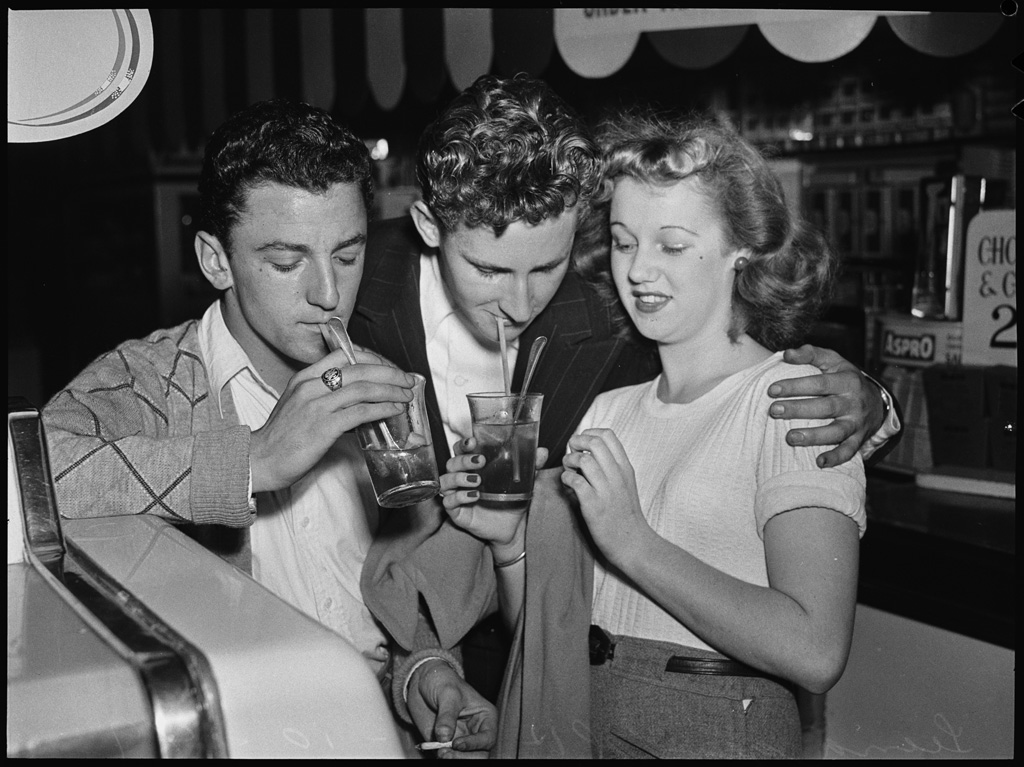
Original caption: AMERICAN-TYPE DRINKS take a large part of the income of teenagers at King’s Cross. Juke-boxes and cinemas are strong competitors for the rest. It’s better than drinking yourself silly with whisky and gin,” they say.

Original caption: TEENAGERS TRIP THE LIGHT FANTASTIC. “Fantastic is right” said the photographer, ‘I haven’t the foggiest death what they were dancing. Somethings modern I suppose.” Scene is a dance club in the King’s Cross area where younger set became experts over night.

Original caption: Teenagers have replaced the Americans at Burt’s milk bar in King’s Cross, Sydney. Many people say it’s the same difference.
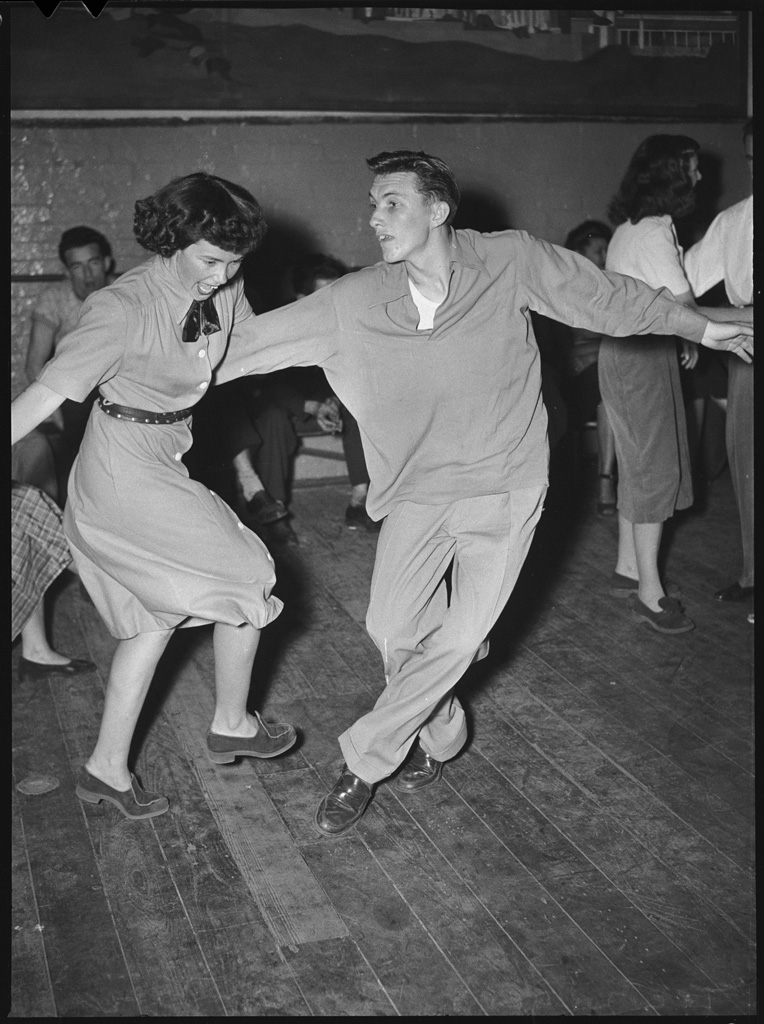
OU CAN’T HOPE TO KEEP UP WITH THEM if you’ve left your teenage years behind. Pam Kenny and Johnny Elliott show just how fast an American step can go before Anno Domini settles on your shoulders. To do it properly you have to know your Amrican music, dance band leader, and your floor. In addition you must have a perfect undemanding with your partner. Even that’s not enough unless your’e absolutely fit and convinced it’s worthwhile.
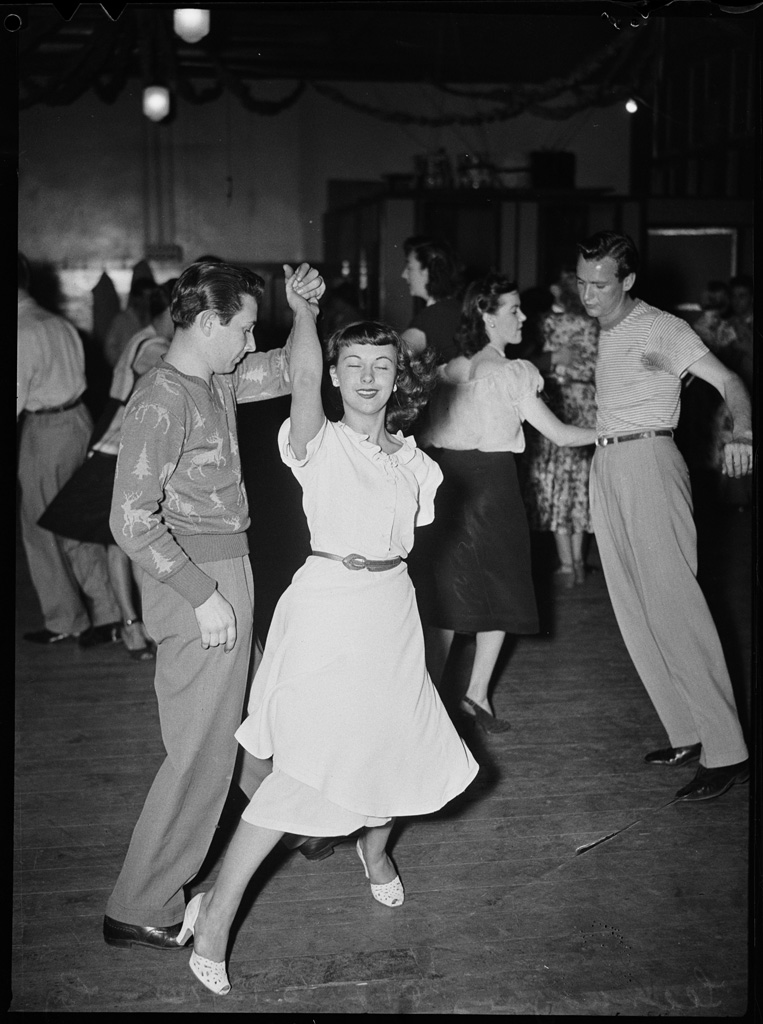
LOOK, NO EYES! Kim Proctor can do this step, blindfolded “Her partner was whisking her round right smartly,” reported the photographer. “She didn’t even notice her slip was showing.”
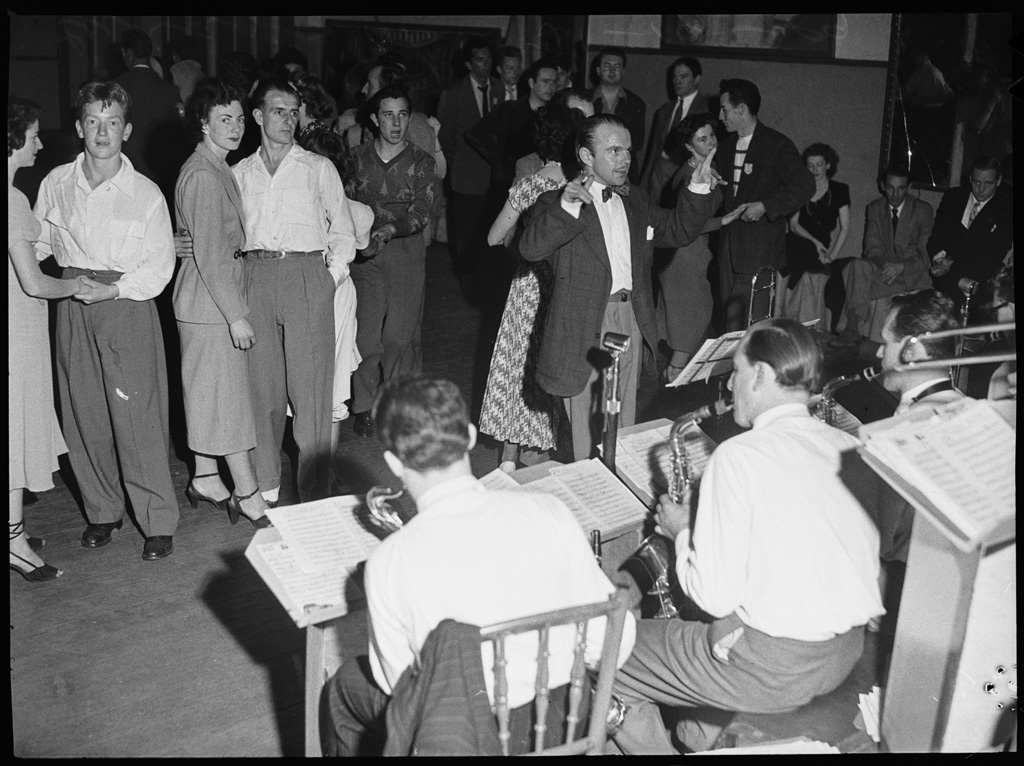
CONDUCTING A BAND for teenager clientele is an exacting job because the kids know all the latest turns and steps. But conductor Billy Weston is popular at the Studio Instruction Club became he has the memory of an elephant.
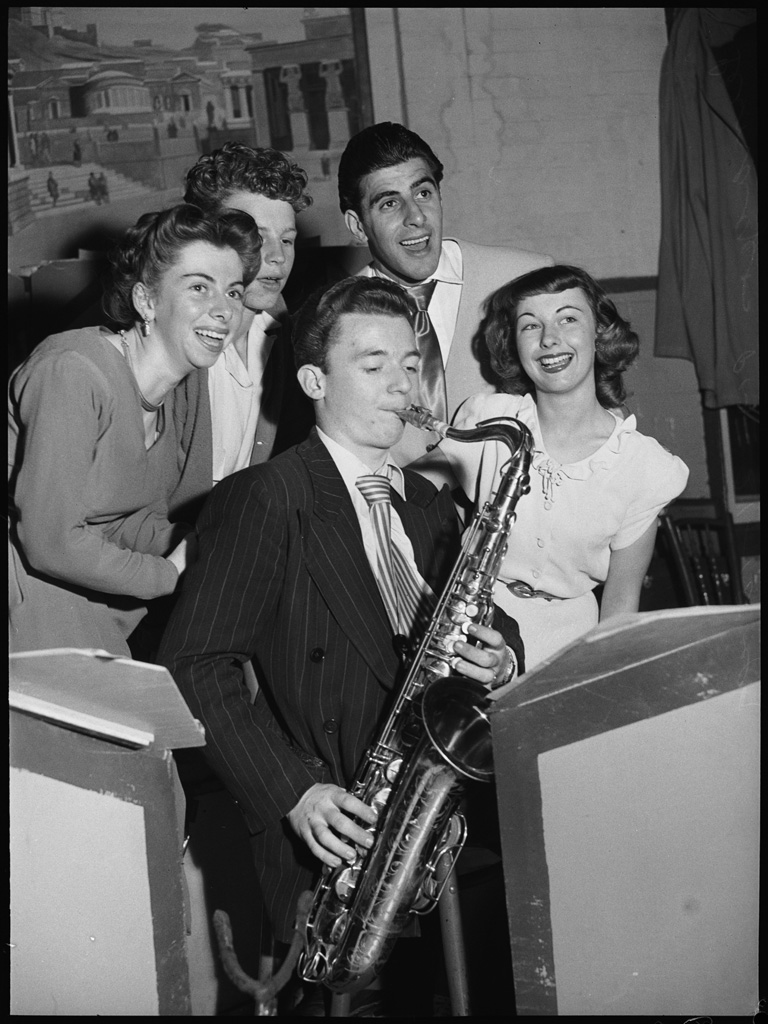
CROWD GATHERS AROUND REG PRICE, of Billy Weston’s band, as he takes up the saxophone to play a few tunes for the youngsters between the intervals of dances. All of them know the tunes as well as he does himself.
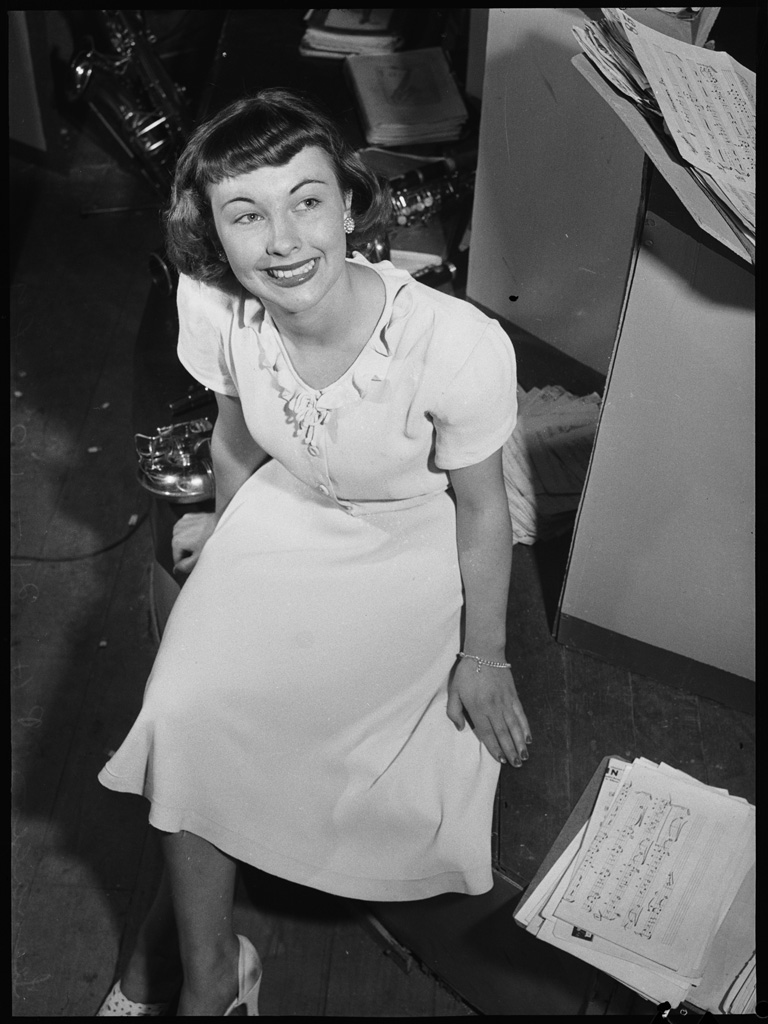
AUSTRALIAN teenagers can still look glamorous with simple make-up and clothes, as picture of Kim Proctor shows.
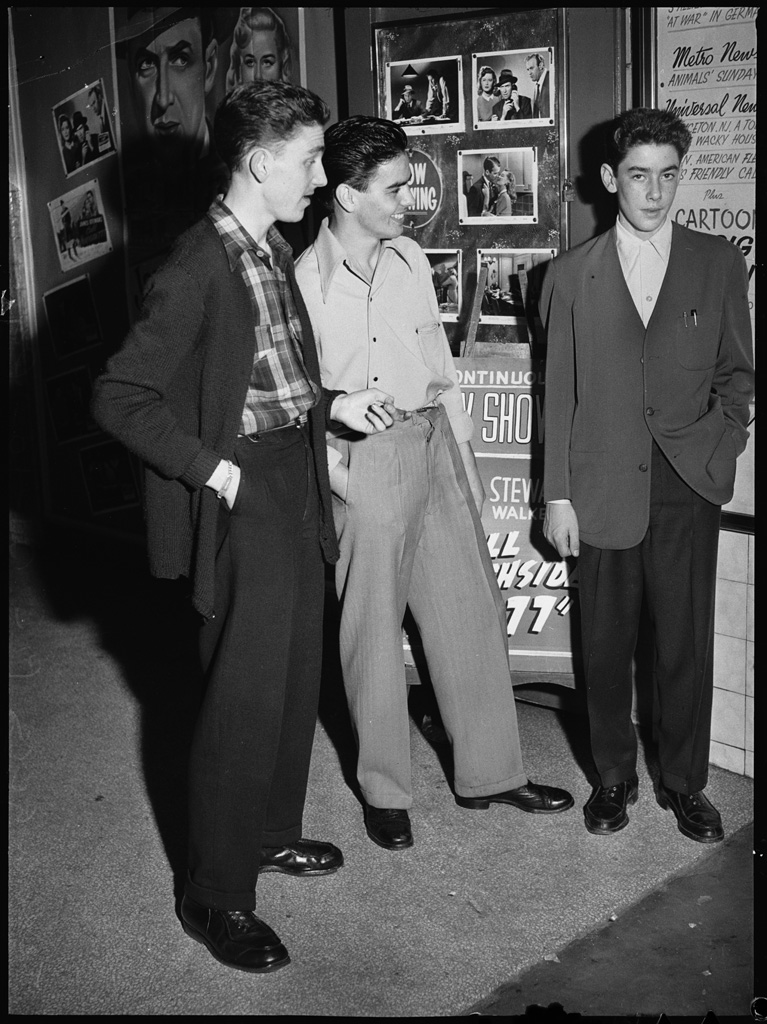
CASUAL AMERICANISM is the dressing style of these teenagers rather than causal Australianism. Teenagers say Aemrican-type clothes combine comfort and elegance.

AMERICAN-TYPE DRINKS take a large part of the income of teenagers at King’s Cross. Juke-boxes and cinemas are strong competitors for the rest. It’s better than drinking yourself silly with whisky and gin,” they say.

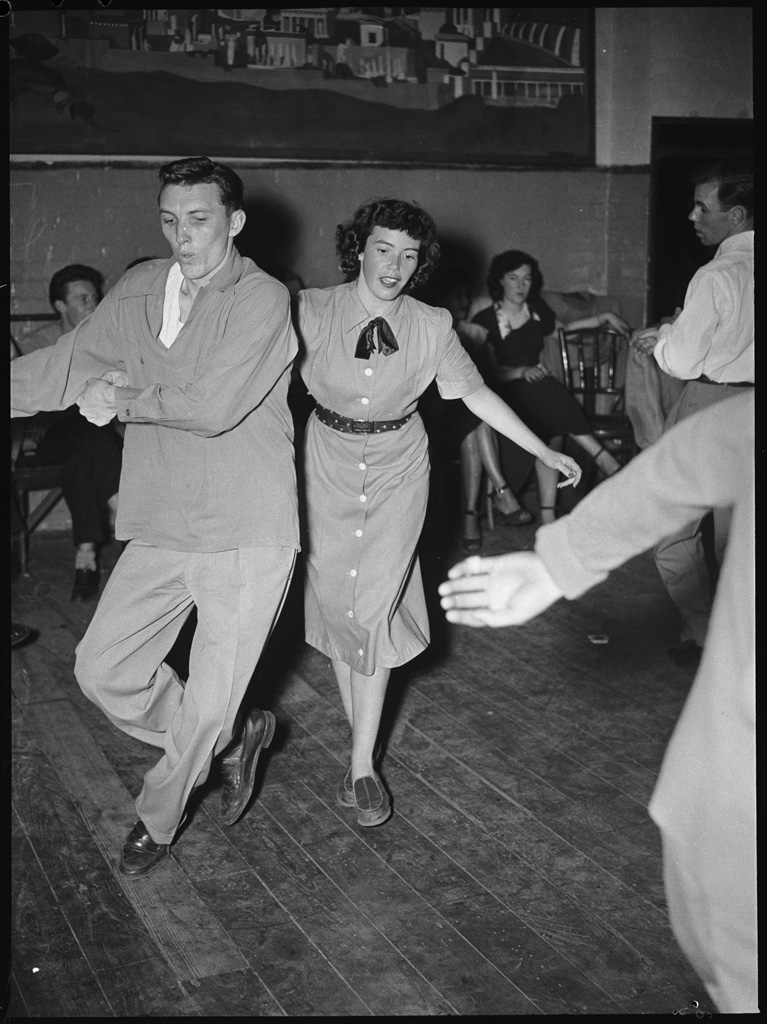
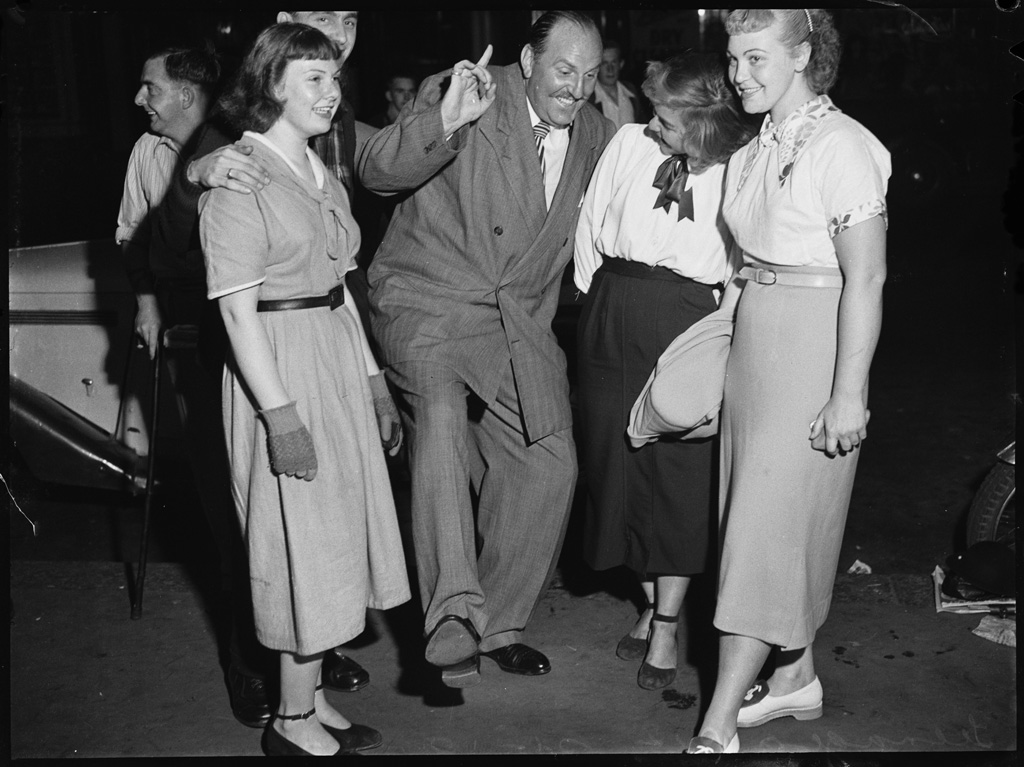
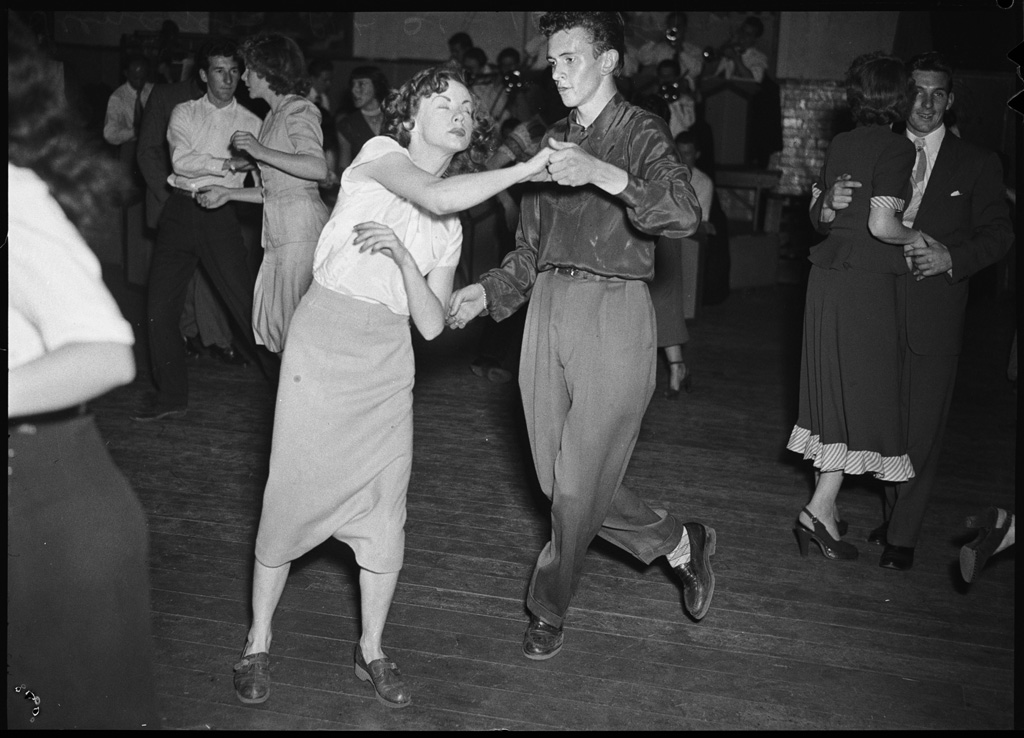
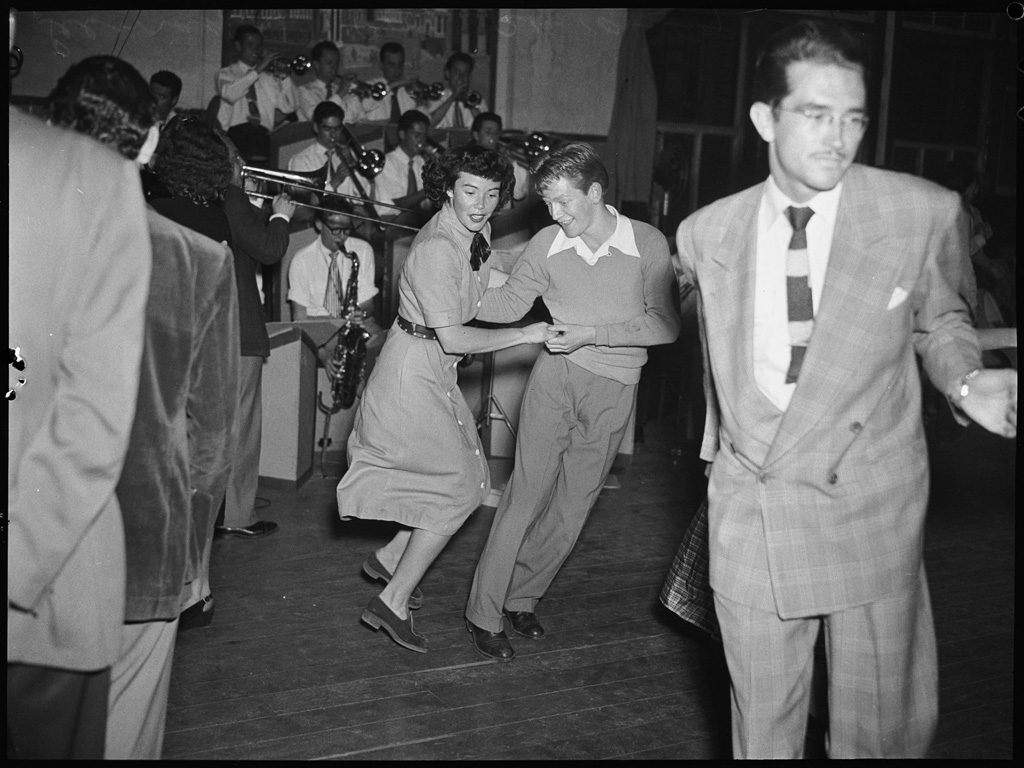
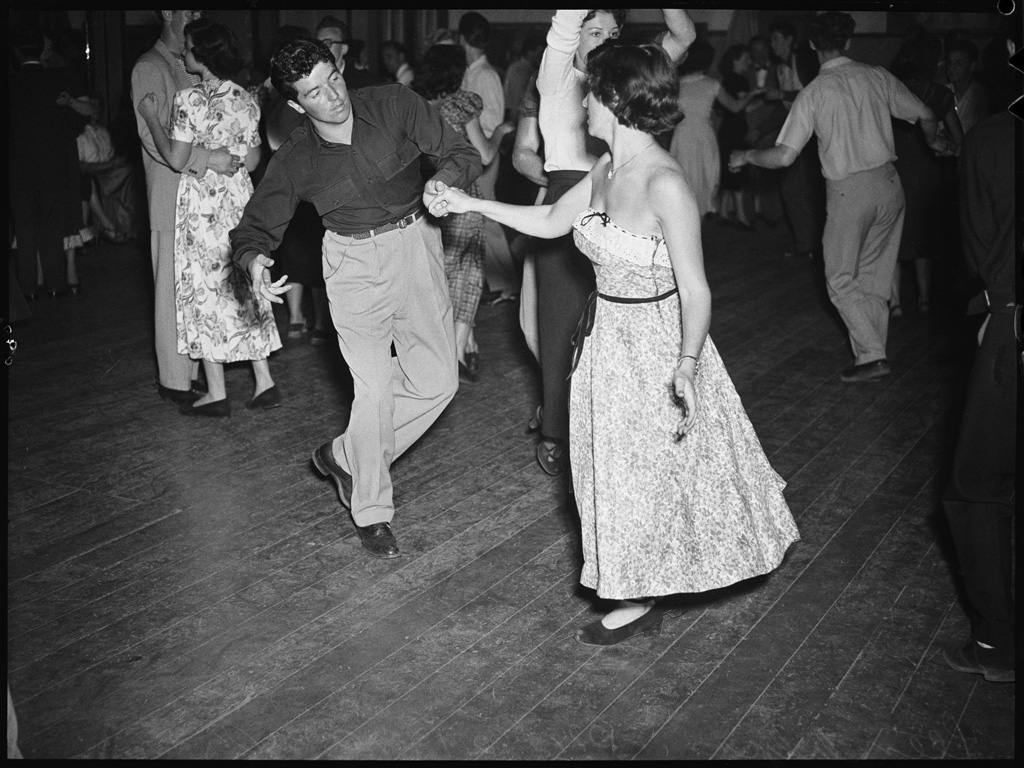
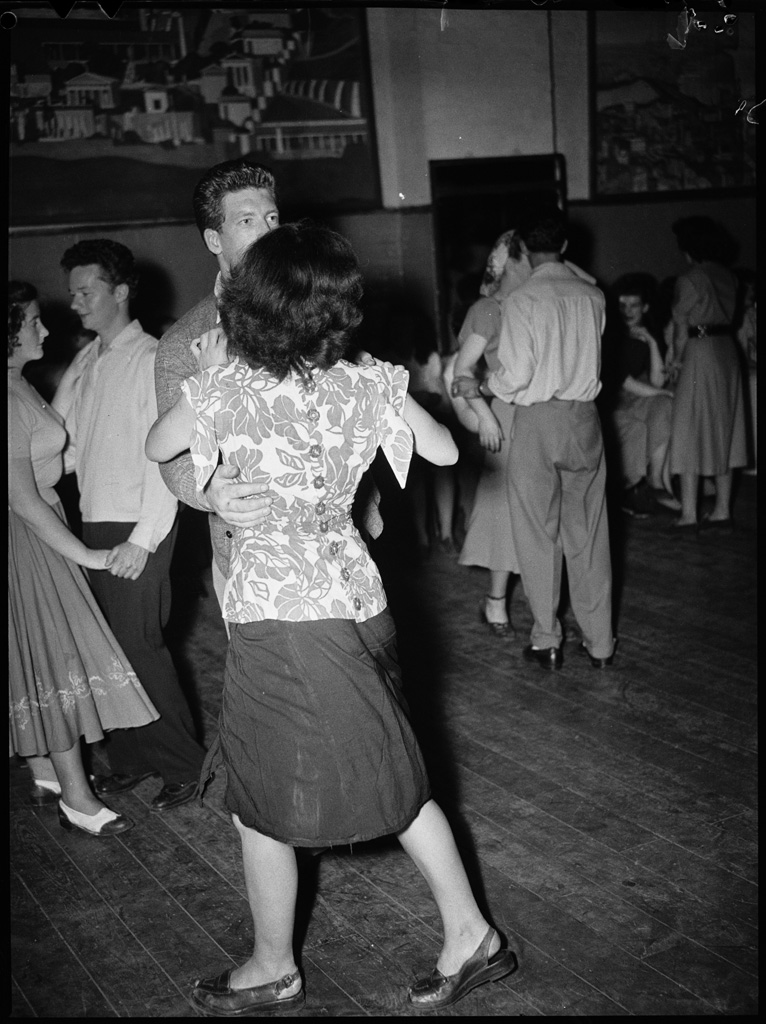
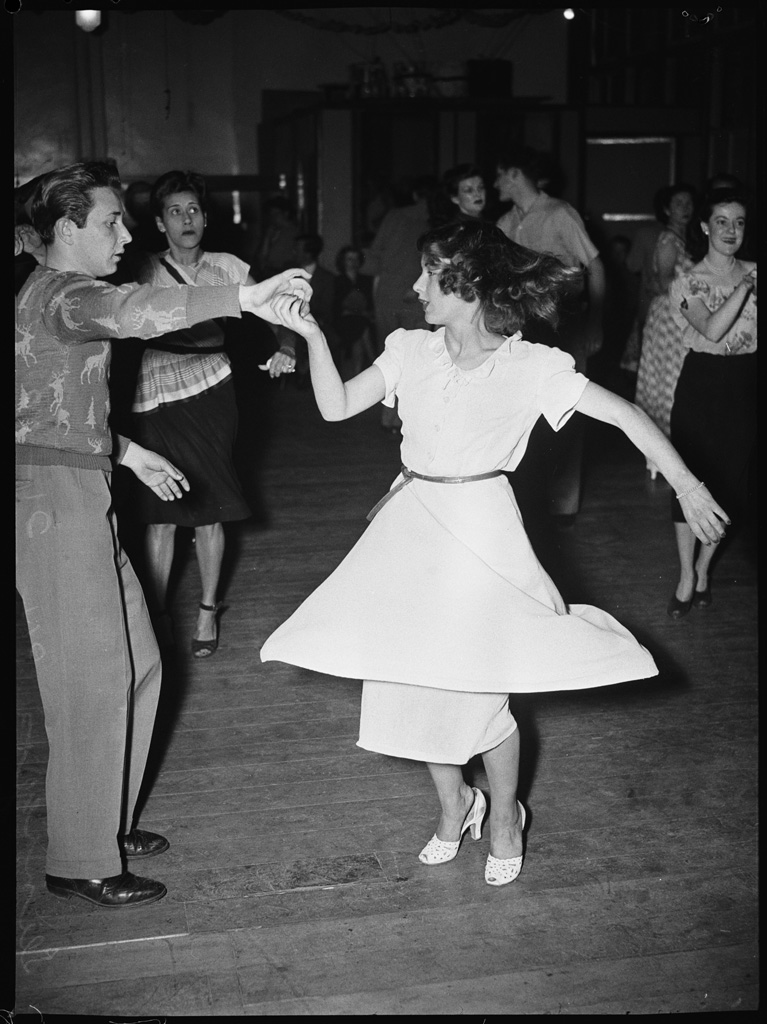
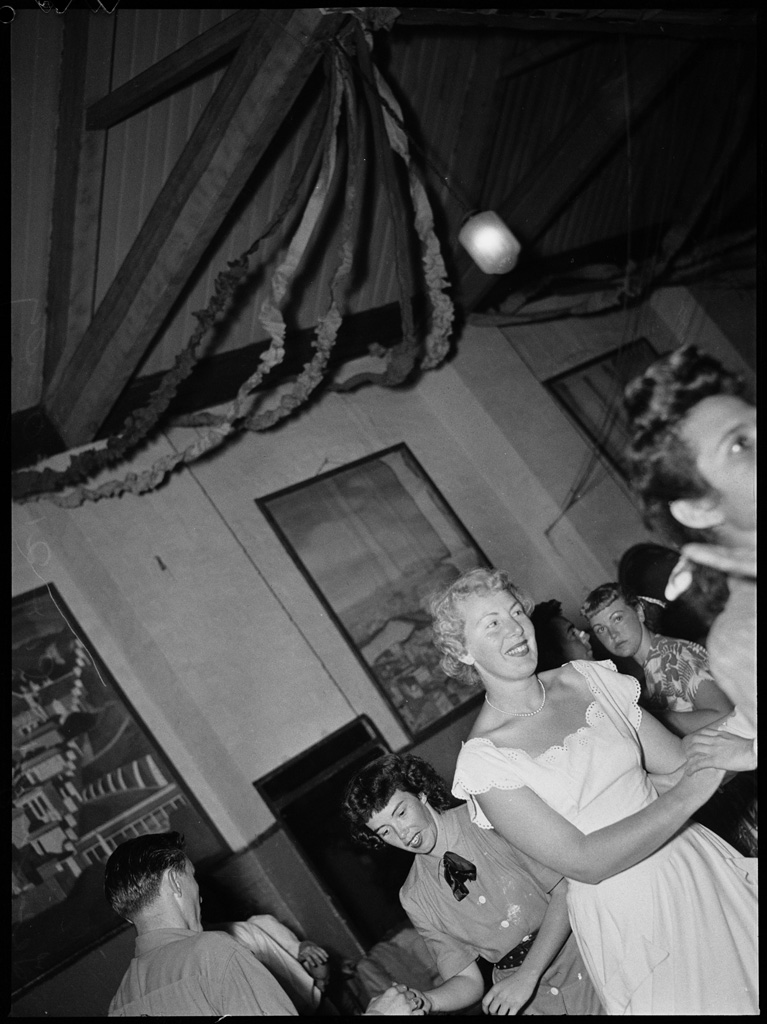
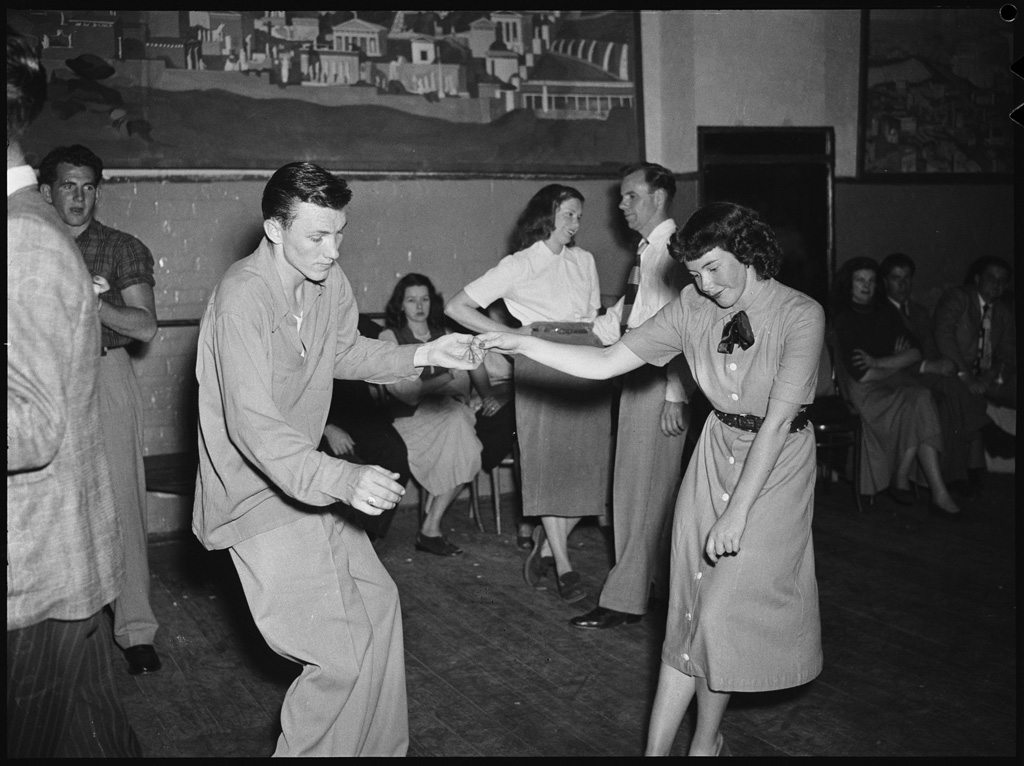
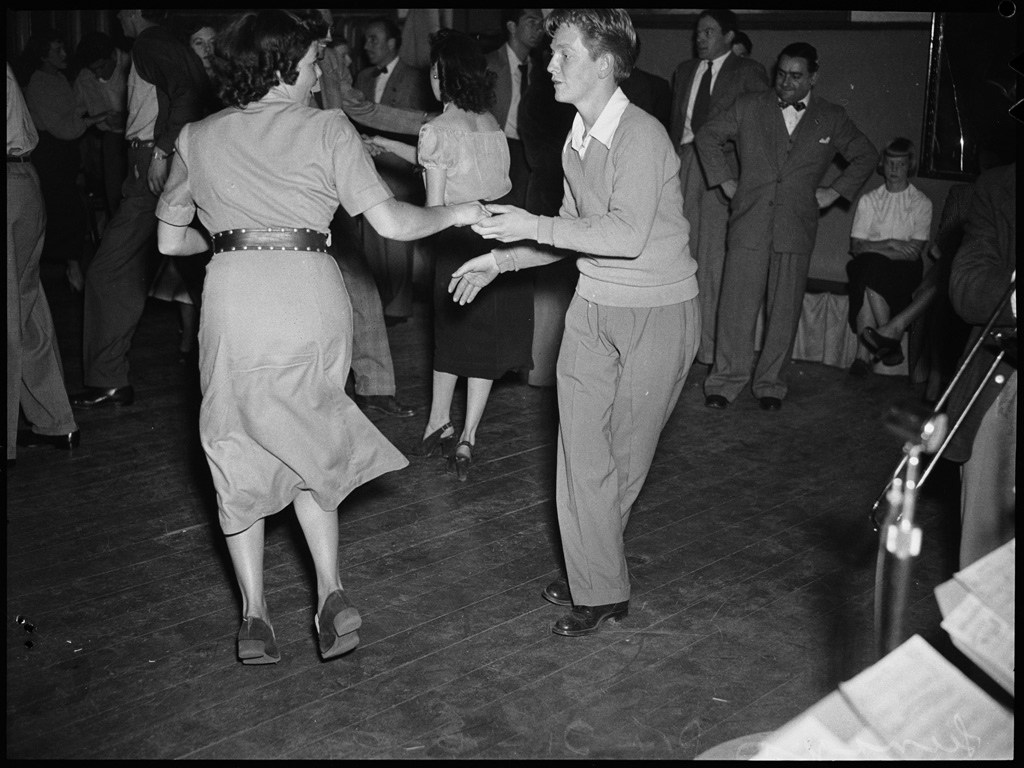
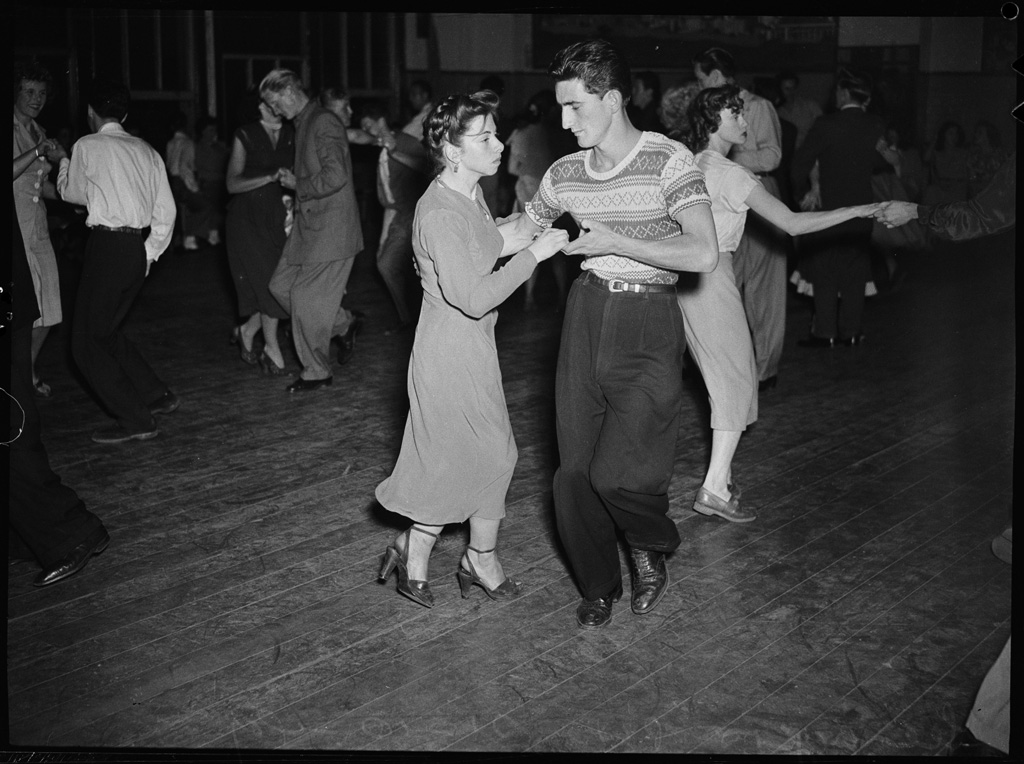
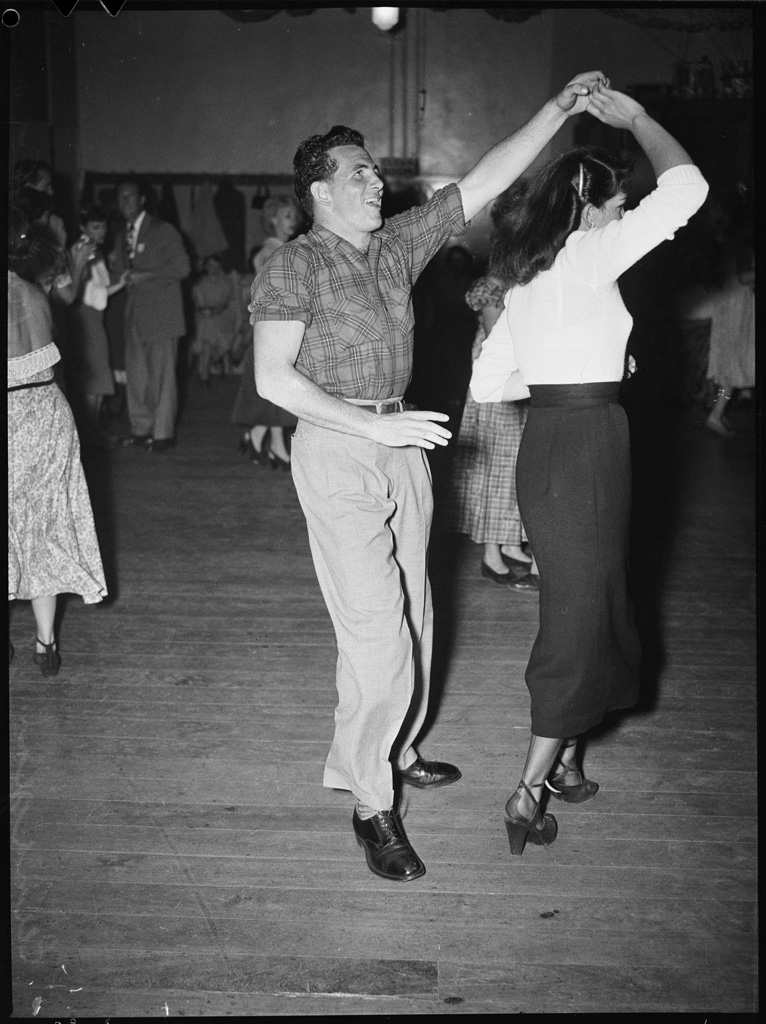

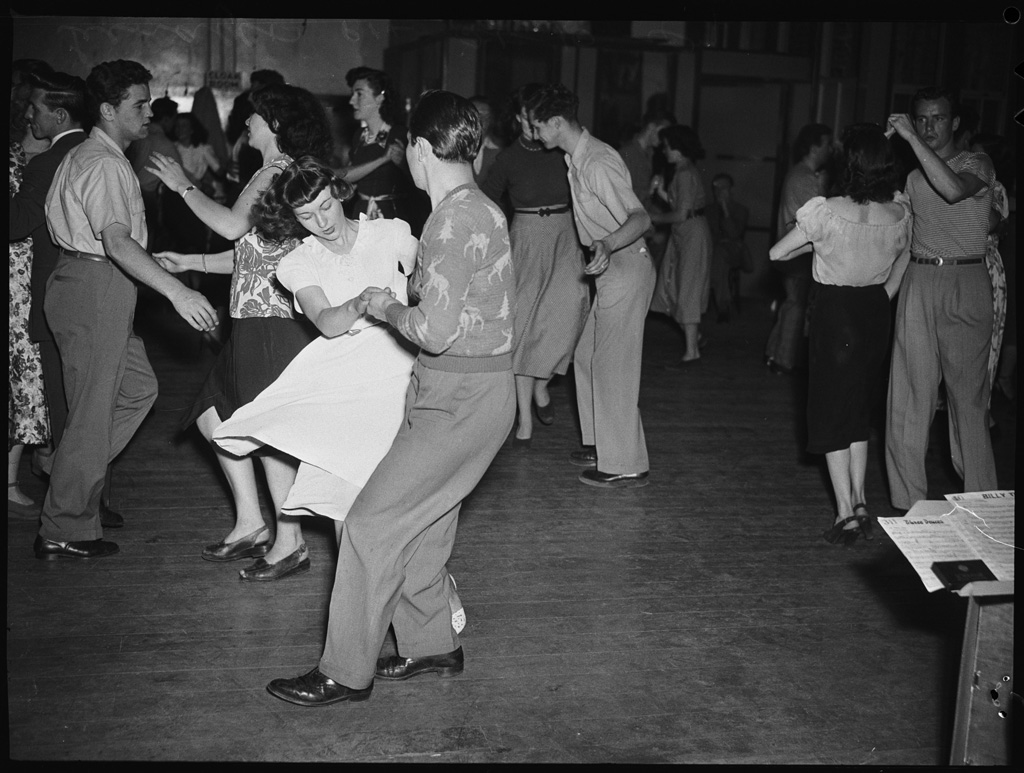

Would you like to support Flashbak?
Please consider making a donation to our site. We don't want to rely on ads to bring you the best of visual culture. You can also support us by signing up to our Mailing List. And you can also follow us on Facebook, Instagram and Twitter. For great art and culture delivered to your door, visit our shop.










